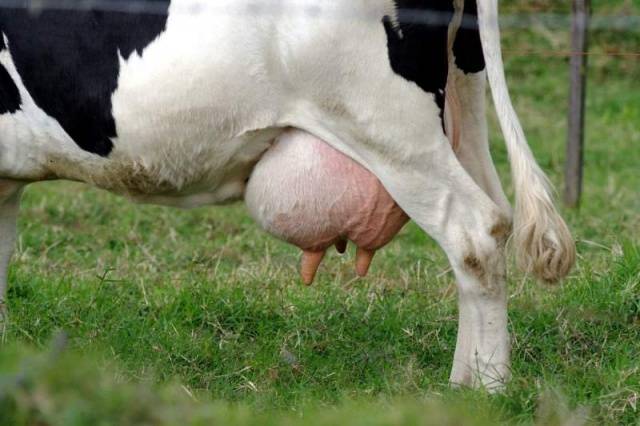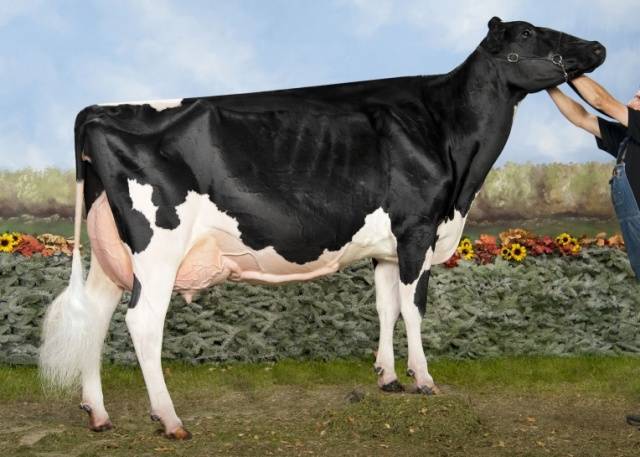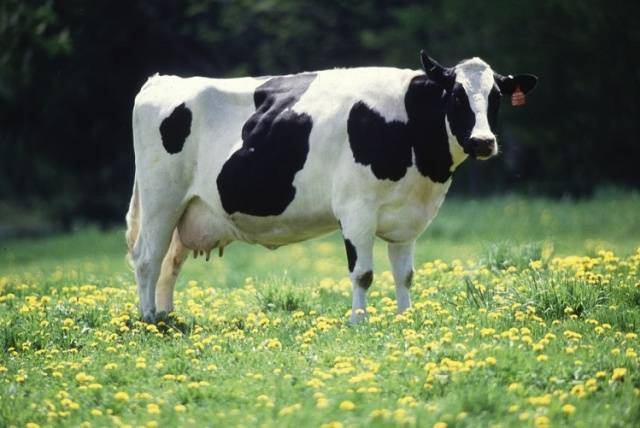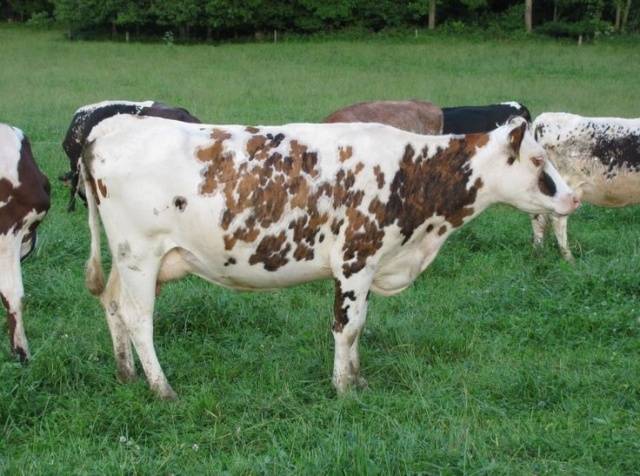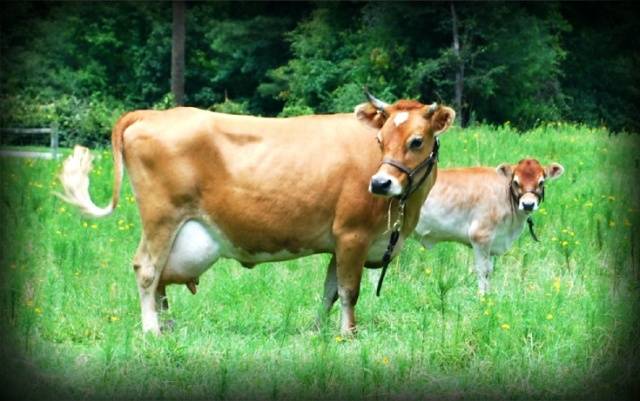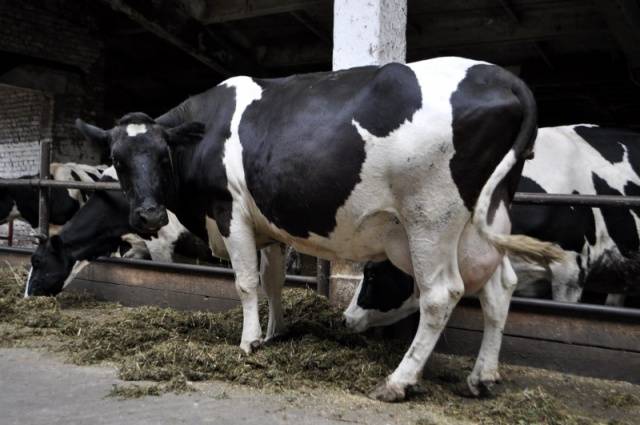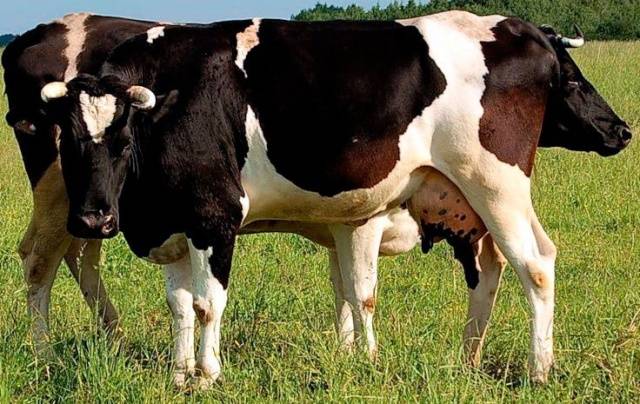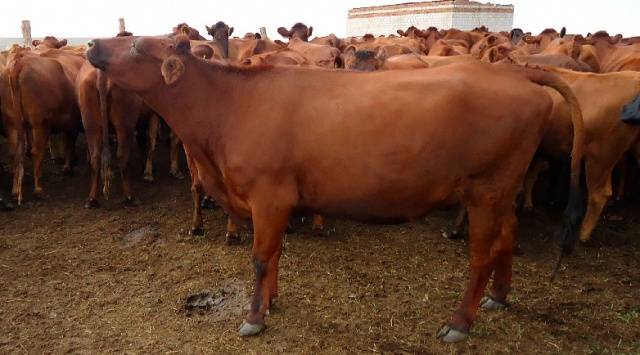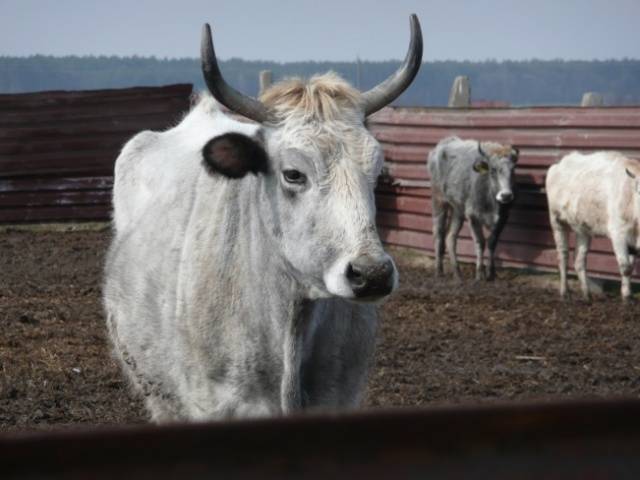Content
When planning to buy a cow to get milk, every private owner wants to buy the best animal that will provide the family with the maximum production at a minimum cost. Although it is not for nothing that there is a saying that a cow has milk on his tongue, there is some truth in such reflections. Not all dairy cows with the same feed intake produce the same amount of milk of the same quality. Regardless of the breed, there are certain rules for choosing a dairy cow.
Choosing a wet nurse
All dairy breeds of cows differ in common characteristics:
- graceful physique;
- small neat head;
- long pelvis;
- perfectly straight back line without protruding withers or rump;
- thin skin;
- well-developed milk veins;
- a bowl-shaped, elastic udder with well-developed nipples;
- legs of medium length.
In general, the description of the best dairy breeds of cows differs only in color and size. But even the cow belongs to the best dairy breed in the world Cattle does not yet guarantee high milk yield. Deviations from the standard occur in every population. Much depends on the shape of the udder and teats.
Which udder is better
In a dairy type of cow, a bowl-shaped udder is preferable: wide at the base, extending far forward to the chest and protruding from the back. The base of such an udder is attached high. In front, the udder line merges smoothly with the abdominal wall. The bottom of the udder is almost horizontal. The bottom line is at the level of the hock. The nipples are rather long, slightly tapered or cylindrical, and set wide apart. The length of the nipples is 6-8 cm. They are located on evenly developed lobes.
The nipples should not be too thick or thin, short or poorly developed. Thick, short or undeveloped teats are uncomfortable when milking, and with thin teats, the cow will lose milk on the move.
Cows with irregular teats are milked by hand, and this only makes sense if the cow is producing better quality milk than her cows. Otherwise, the cow is culled from the dairy herd.
A rounded udder is not considered faulty, but for a dairy breed of cows it is a disadvantage. It is typical for beef cattle, which only need milk to feed the calf. A rounded udder has a smaller base than a bowl-shaped udder. The anterior wall meets the belly almost at right angles. The shares of the udder are also not always evenly developed. With age, the rounded udder sags, begins to damage against the hard stems of plants, gets dirty.
"Goat" udder for dairy cattle is considered vicious and such an individual must be discarded. The “goat's” udder has underdeveloped front lobes and from the side it looks triangular. The nipples on such an udder are thick, close-set, and long. In addition to the simple inconvenience of milking, cattle with such udders have low productivity.
Udder defects are most likely inherited.
What a representative of the dairy cow breed should look like in the photo below.
In addition, you should pay attention to the age of the cow.Age is determined by teeth or horn rings. The latter is possible only if the animal is not hornless. When determining the age of a dairy cow by horns, two years are added to the number of rings available. When buying cattle for milk, age is also very important. A good dairy cow will produce up to a maximum of 8 years. Then the milk yield decreases. Without the birth of a calf there will be no milk. And the rings show how many times the cow has calved. A heifer often occurs at the age of one, at two - she brings the first calf.
The age of the teeth is determined by the level of abrasion. But there may be errors, since the erasure of teeth depends on the food that the animal received and the strength of the tooth enamel.
Before you finally choose a dairy cow, you need to milk the selected candidates yourself. Sellers need to be asked not to milk the animal before the buyer arrives, then it will be possible to estimate how much milk this particular individual can give.
Which breed to choose
When choosing a cow, you want to take the best, but then the buyer steps on thin ice. What are the dairy breeds of cows? Obviously, the best dairy breed of cows is the Holstein black and white. But in reality, not everything is so simple.
Holstein
How this Dutch cattle breed was "appropriated" by the German province of Holstein is not clear. Nevertheless, the name is German, and the Netherlands are considered the birthplace of the breed. The description of this dairy cow indicates that she can produce up to 60-65 liters of milk per day. This breed is kept on dairy farms around the world. The record for milk yield was set in Israel, where during the lactation period 10 thousand liters of milk were milked from one cow. In Russia, the milk yield of this cattle is lower: up to 7.5 thousand liters.
It would seem that there is nothing more to wish for. But not everything is so simple. To get a lot of milk from this breed, it is necessary to create comfortable conditions for it and provide it with high-quality feed. At the same time, the fat content of milk in this breed is only 3%. But what about butter and sour cream?
In second place in the ranking of dairy breeds in the world is Ayrshire cow.
Ayrshirka
The Ayrshire breed can be easily confused with the red-and-white version of the Holstein, but the Holstein is larger. Milk yield of Ayrshirok for the lactation period is on average 4.5 tons, and the fat content of milk is already higher than that of Holstein: 4%. But cattle of this breed are also quite picky about feed and maintenance, is there any point in suffering if you can find a cow with almost the same milk yield and much higher milk fat content?
Jersey
In terms of feed / output ratio, this is the best dairy breed of cows. The Jerseek milk yield is only slightly lower than that of the Ayrshire breed: 3.5-4 thousand liters. With a certain effort, even 5 thousand liters of milk are fed from these cows. And the set record is 9 thousand. At the same time, their milk fat content is about 5%. And for the production of 1 liter of milk, only 0.8 feed is needed. units Jersey cows need significantly less space than their rivals, as these cows are very small in size. Females are docile, although bulls should be feared.
Jersey could become the best dairy cow for a private trader, if not for its inherent disadvantages arising from the conditions for breeding the breed. The island where Jersey cattle were raised is very small. A large livestock cannot be kept on it. This means that inbreeding is inevitable. The fragile appearance and large languid eyes of Jerseeks are also a consequence of inbreeding, but not fatal. It is much worse that these cute animals have weak immunity and are more susceptible to diseases than other breeds of cows.
Also the body Jersey cow adapted to the assimilation of forages grown on soil oversaturated with microelements and in areas far from the sea, Jerseys need special feeding.
The main disadvantage of the breed is the price. Even in Europe, these Jerseys are rare and expensive.In Russia, hybrids are often kept and rarely anyone shells out for a purebred animal. Therefore, despite the high productive characteristics of Jersey dairy cows, they are not widespread in Russia.
If foreign breeds are fastidious, and some are painful, maybe it is worth taking a closer look at the domestic ones and choosing the dairy breed of cows in Russia?
Russian dairy cattle
There are as many breeds of dairy cows in Russia as there are climatic zones. Historically, in Russia they wanted to get milk from cattle, not meat. Meat was usually provided by other livestock and wild game.
The primordially Russian breeds were well adapted to the climate of the area where they were bred by the method of folk selection. The local cattle were undemanding to feed and were able to survive on rotten straw from the roofs. But they could not be called the most dairy breeds of cows then, and not now.
Asking the question "which domestic breed of cows is the dairy most dairy in Russia", one will have to return to the Holstein one again. More precisely, to her descendants.
Black and motley
This is the most popular breed of dairy cattle in Central Russia. Descendants of Holstein bulls and local queens, black-and-white cattle can produce from 5.5 to 5.8 tons of milk per year. In this case, the fat content is inversely proportional to the milk yield and is 3.4-4.15%.
Black-and-white cattle are much better adapted to the Russian climate than Holstein ones and allow more "liberties" when kept on a private backyard. These cows are less demanding on feed and temperature in the barn. But for the more northern regions, the dairy breed of cows will be different.
Kholmogorskaya
Kholmogorsk cattle were bred in the Arkhangelsk region and are perfectly adapted to the northern cold. Kholmogork is bred not only in the north of the European part of Russia, but also in Siberia. Milk yield ranges from 3.5 to 8 tons of milk per year. The fat content is 3.6-4%. With proper selection of feed, the fat content of milk from Kholmogory cattle can reach 5%.
The disadvantage of Kholmogorki is the rounded udder that is often found in the population.
Yaroslavl
A very popular breed among private owners, which gives milk of high fat content: 4-4.5%. But the milk yield, quite expectedly, is low: an average of 2250 kg per lactation period. The maximum milk yield is 5 tons.
Yaroslavskaya is very recognizable from the photo and description among other dairy breeds of cows: she has a black body and a white head. White marks are also present on the belly, passing to the udder.
Yaroslavka is not large. They are similar in size to Jersey, but do not require such attention and care. Yaroslavl cattle has a good ability to adapt in various conditions, but for the southern regions it is better to purchase dairy cattle breeds bred in the steppes of Ukraine.
Red Stepnaya
Able to survive in the relatively arid Tauride steppes of Ukraine, Krasnaya Stepnaya is distinguished by good milk yields: 3.5-4 tons of milk per lactation. But the fat content of milk for such milk yields is not high: 3.2-3.4%. However, where does the fat come from if the grass is succulent Red steppe livestock receives only in spring and early autumn. In summer, the grass burns out and the cows are forced to eat dry stalks of little nutrition. Red steppe cattle tolerate drought and heat well, but are more sensitive to cold weather than northern breeds.
Gray Steppe
The breed is not dairy, but it deserves a mention for its uniqueness. Today it is an almost extinct breed, some of which were preserved by the monks of the Kiev-Pechersk Lavra. Moreover, with God's help, they managed to milk the cows of this breed up to 20 liters of milk per day, which is quite a lot even for the recognized "dairy" representatives of cattle.At the same time, Seraya Stepnaya has a slight advantage over her "sister" Krasnaya: a greater lethal yield of meat from a carcass.
You will not deny the Gray Steppe and endurance. Back in the 19th century, this breed was used as draft animals. Which meant working in a yoke during the day and recuperating on meager grazing at night. Such exploitation has developed the ability of Seraya Stepnoy to get by with a minimum of poor quality feed.
Conclusion
When choosing a cow, you should pay attention not only to advertising and the prestige of the breed, but also to the climatic conditions in which this animal will have to live and produce. In case of increased heat or extreme cold, milk yield will inevitably decrease. Demanding feed can play a cruel joke with the owner of cattle, if suddenly the hay or compound feed turns out to be of poor quality.
Livestock breeding has begun to revive in Russia today. Breeding work is being carried out again, aimed at increasing the productivity of dairy cattle of local breeds. Exhibitions are held where the best dairy cows in Russia are presented. The video below is one of these exhibitions.
